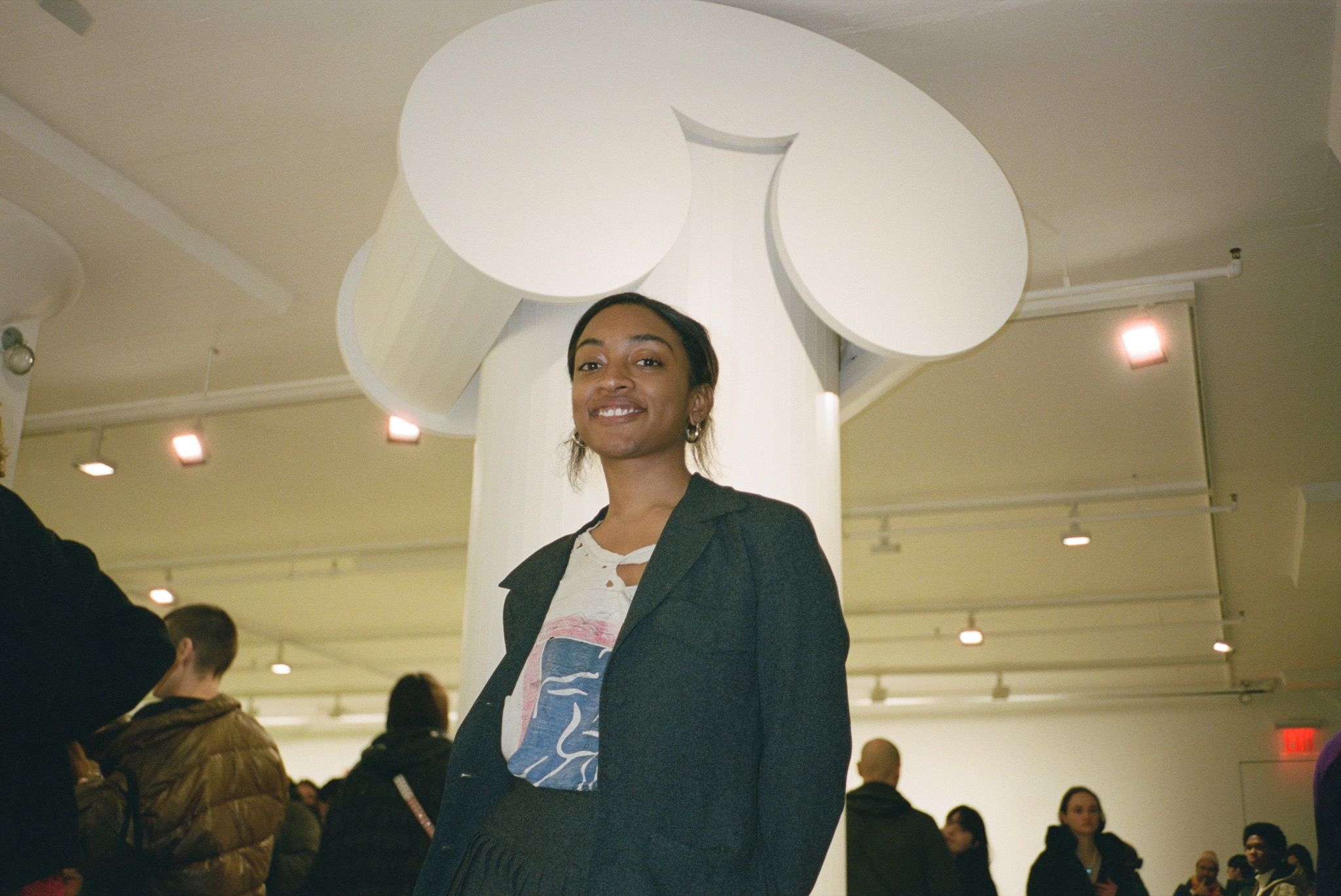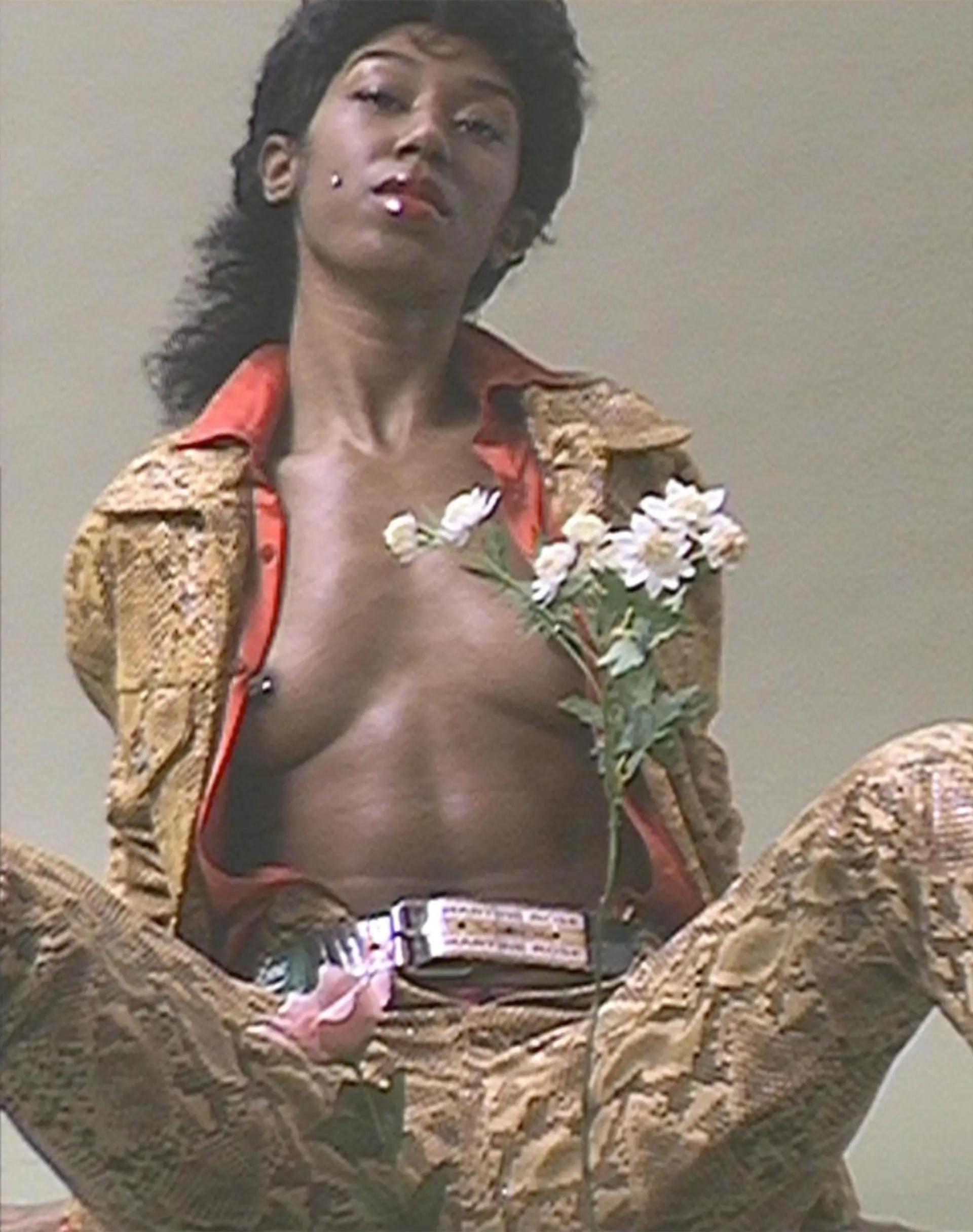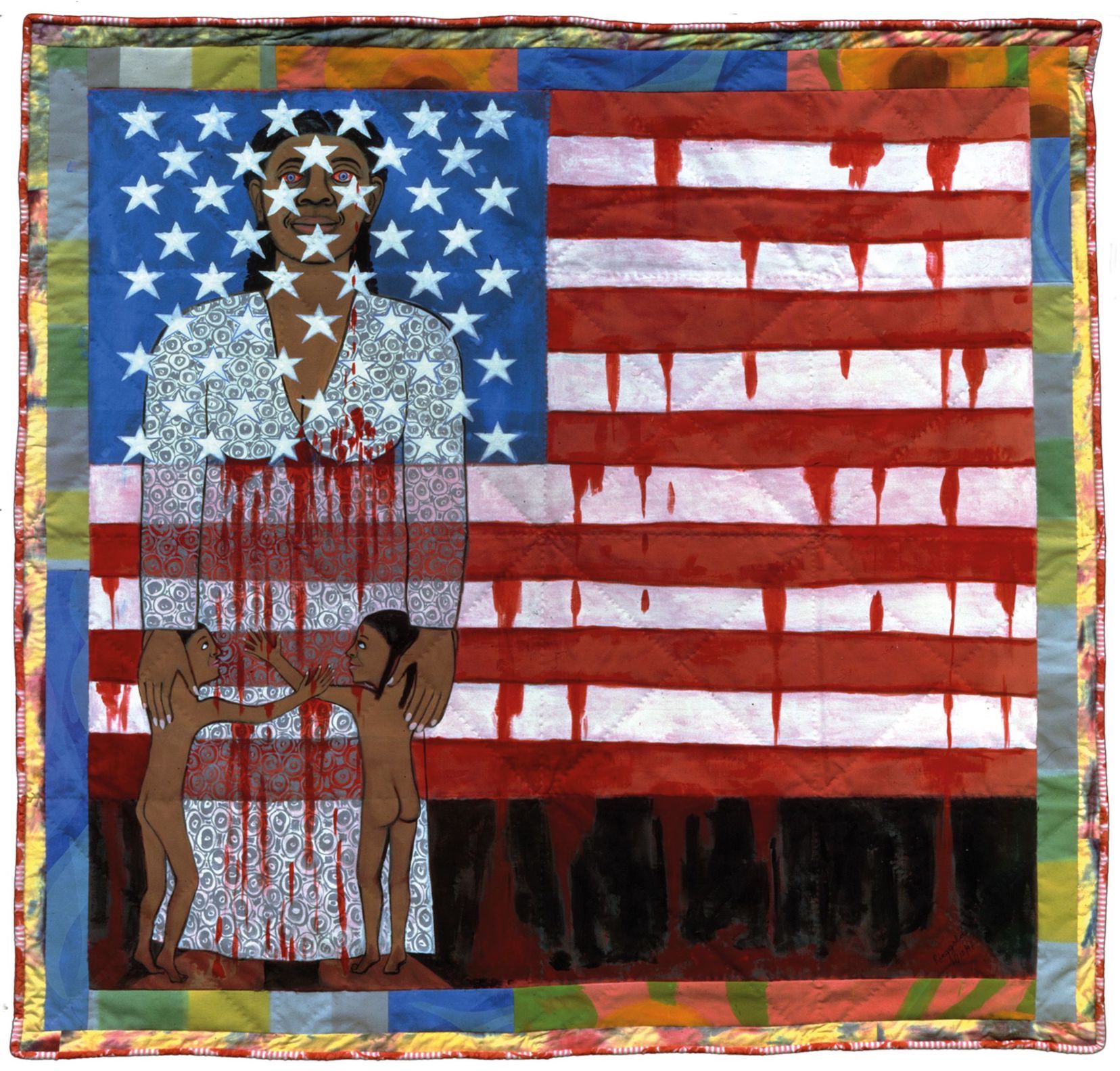Coded Images: CAITLIN CHERRY on Bodies, Access, and the Interface
|Tash Nikol Smith
When exploring histories of complex, Black feminine identities in contemporary art and literature, there comes a point where you hit a void: Did these figures really exist? But they always have, taking on a myriad of modes of survival and preservation for themselves and their community. Hortense Spillers emphasizes the distinction between bodies and flesh as they pertain to a Black ontology in “Mama’s Baby, Papa’s Maybe” (1987), writing that although the flesh and body have been “liberated,” the “profitable ‘atomizing’ of the captive body” remains “grounded in the originating metaphors of captivity and mutilation” that followed chattel slavery into the new world.
This condition of Black bodies as fragmented and commodified provides a link to the ways Black identity functions today, in a world spoiled by the colonial gaze. Artist Caitlin Cherry explores these notions in her painting practice, where she borrows images of Black dancers, models, and influencers in contemporary culture for her source work. Her recently closed exhibition, Crichoues Indignation at The Hole in New York City, visualized the clash between Black femme identity and contemporary image culture through qualities reminiscent of psychedelia and gaming. Embedded within the bright colors, radial motion, and computer code characteristic to Cherry’s suite of large-scale paintings are the women central to industries that desire to diminish and define their identities. Borrowing its title from a series of tweets by Kanye West, in which the term “righteous indignation” is memeably misspelled, Cherry’s exhibition addresses the constant vulnerability of all Black bodies, specifically emphasizing society’s continued disregard for the wellbeing of the Black femme.
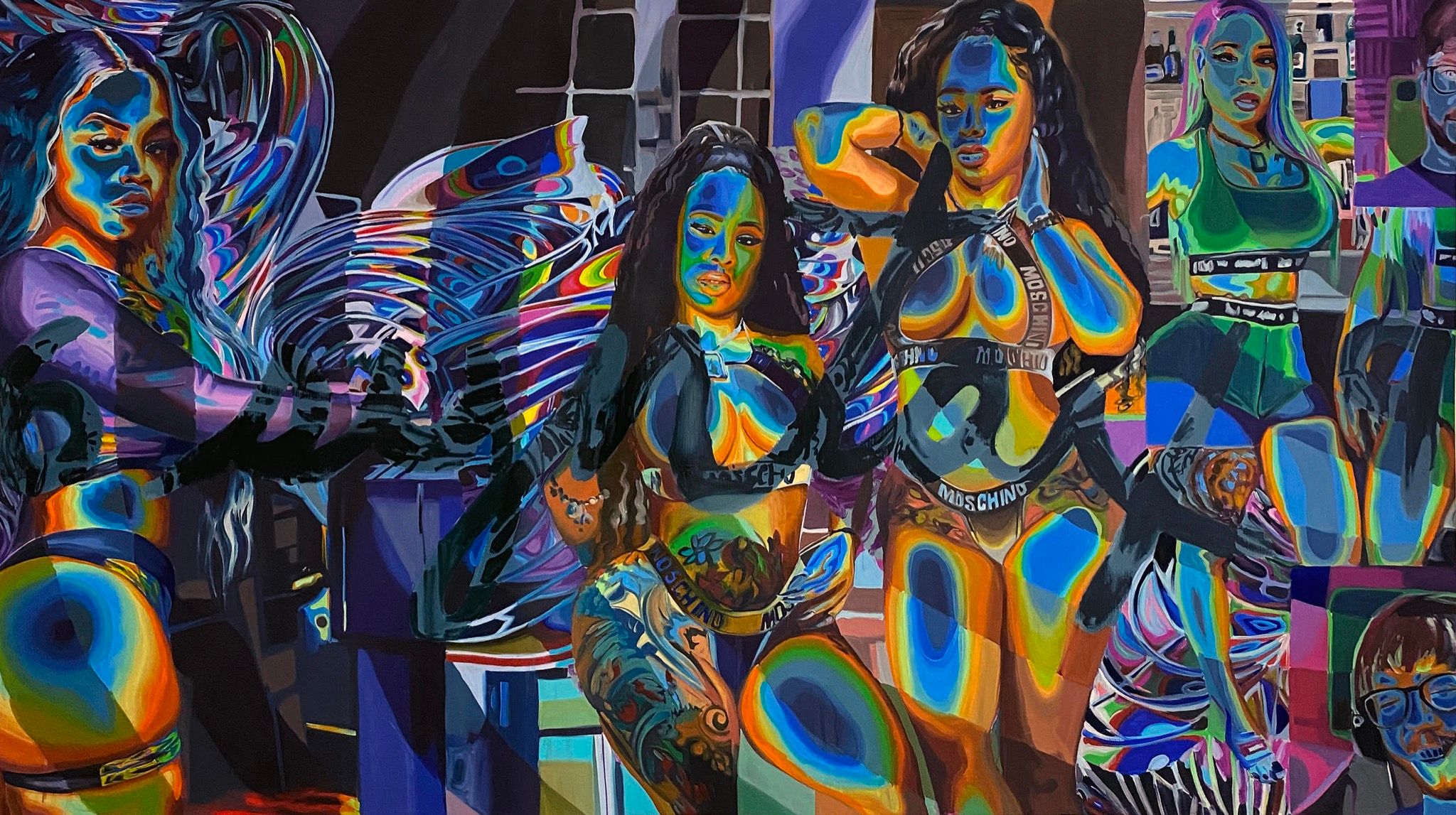
Tash Nikol Smith: The whole Kanye rant was bizarre, but the timing of his misspellings and the term “righteous indignation” have a lot of relevance within our world right now. How did you see your concept come to life under that title?
Caitlin Cherry: The title is a bit of a mix between miscommunication and technology itself – the algorithm of autocorrection and the hidden meaning of righteous indignation. I saw Kanye’s series of tweets on Instagram. It was very strange. Not too many people probably even noticed his misspelling of “righteous indignation,” because it happens to all of us. Sometimes you’re so ready for the autocorrect algorithm to do its thing that you think you’re typing in a word. Kanye typed in this word, which isn’t a word, and it’s in the screenshot as evidence that he typed it into search. To me, he represents somebody who’s constantly at war with the industries they exist in.
I was also attracted to the phrase, because I feel like it described my actual state of mind throughout a good majority of the last few months prior to the show. I was so angry and spent a good chunk of that time ranting on Instagram about racism and trying to compile resources to get white folks to do this and that. It felt like I was holding in five years of anger and letting it out.
The exhibition drew me to reflect on bell hooks’ “Selling Hot Pussy: Representations of Black Female Sexuality in the Cultural Marketplace.” She writes, “Most often, attention is not focused on the complete Black female on display. She is there to entertain guests with the naked image of otherness. They are not to look at her as a whole human being.” It supports the complex reality that our bodies as Black women are represented, appropriated and fetishized everywhere.
I think it’s incredibly complex and it’s something I’ve chosen to tackle with sensitivity – having this body and moving through a world in which I’m constantly confronted with how I’m viewed, and how that allows or denies me access to spaces. The women that I paint are very much of the moment, Black women who are in the industry – mostly Instagram influencers and cabaret workers. My painting practice is partially archival, especially in the sense of examining the history of painting the female nude as iconic and cliché. I really fight to create paintings that archive the images that we see so much in popular culture, but that don’t often register as “worthy” because they’re on a club promotion, or something.
I’m not particularly interested in getting into the female gaze on top of that. It’s sort of a boring conversation, because it doesn’t include Black women or Black femme identities at all. I’d say my paintings are an attempt to recalculate their identity not by fixing it or correcting it, but actually complicating it by adding in the technological interfaces between us and them.
Thinking about the concept of the cyborg and Blackness, specifically around Donna Haraway’s A Cyborg Manifesto – there’s always a miscalculation between race, gender and class that they can never really figure out. So there’s always an inaccurate representation of who any singular person is, as a result of us being confronted with all these signifiers at the same time. I’m not really seeking answers through making the art – but it’s something that I question as somebody who lives in a similar body and wants to be thought about deeply.
How do you source the images you archive?
All of the images were sourced from Instagram. They’re basically screenshots from Instagram posts, either through the influencer’s own page, or through the clubs that they work at. There are also video stills of men. Typically, I’m painting sexy Black women representing themselves distinctly in a world absent of the men that are positioned around them in clubs or in photos. I returned men to the frame for this show for a different purpose.
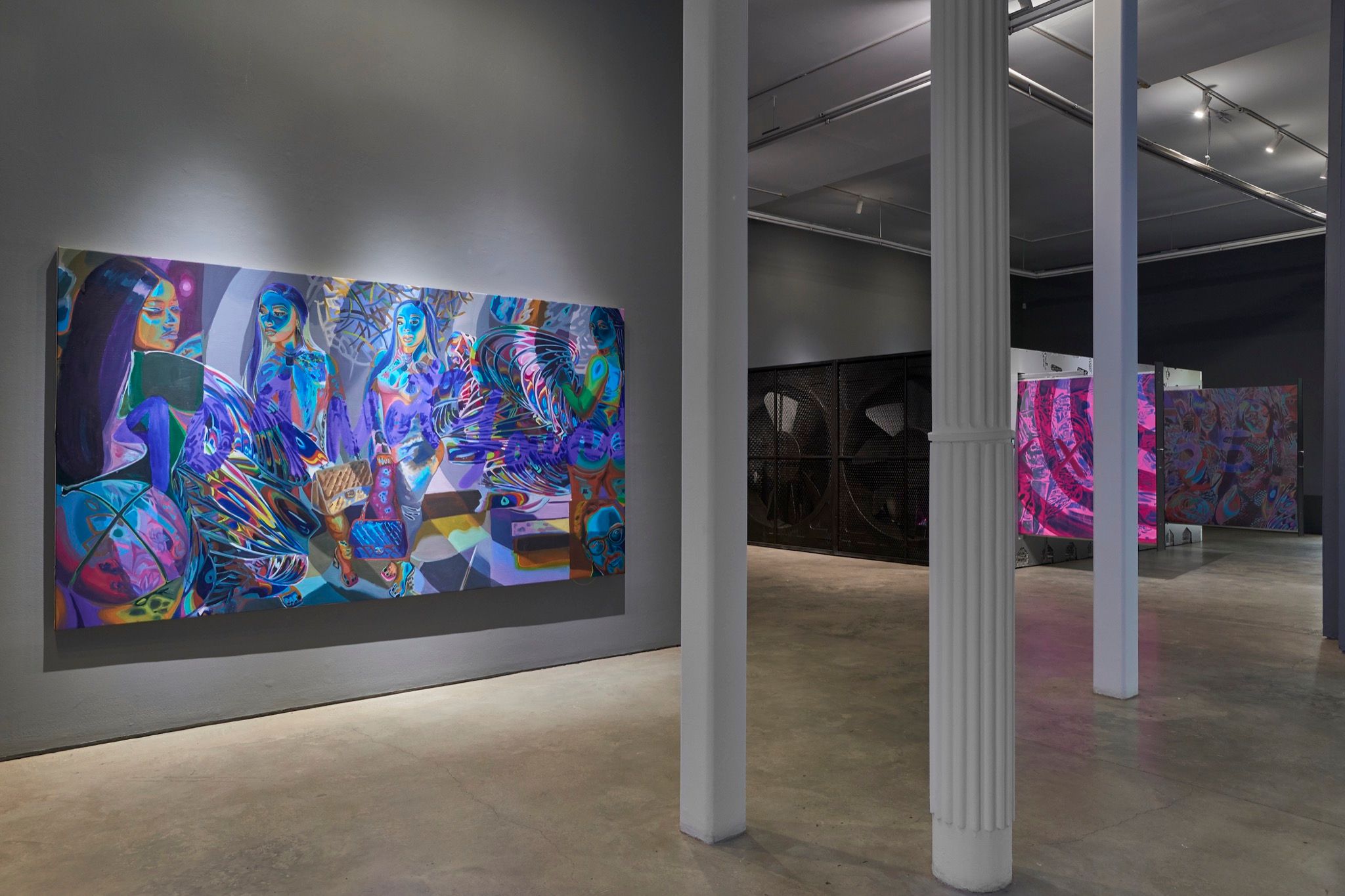
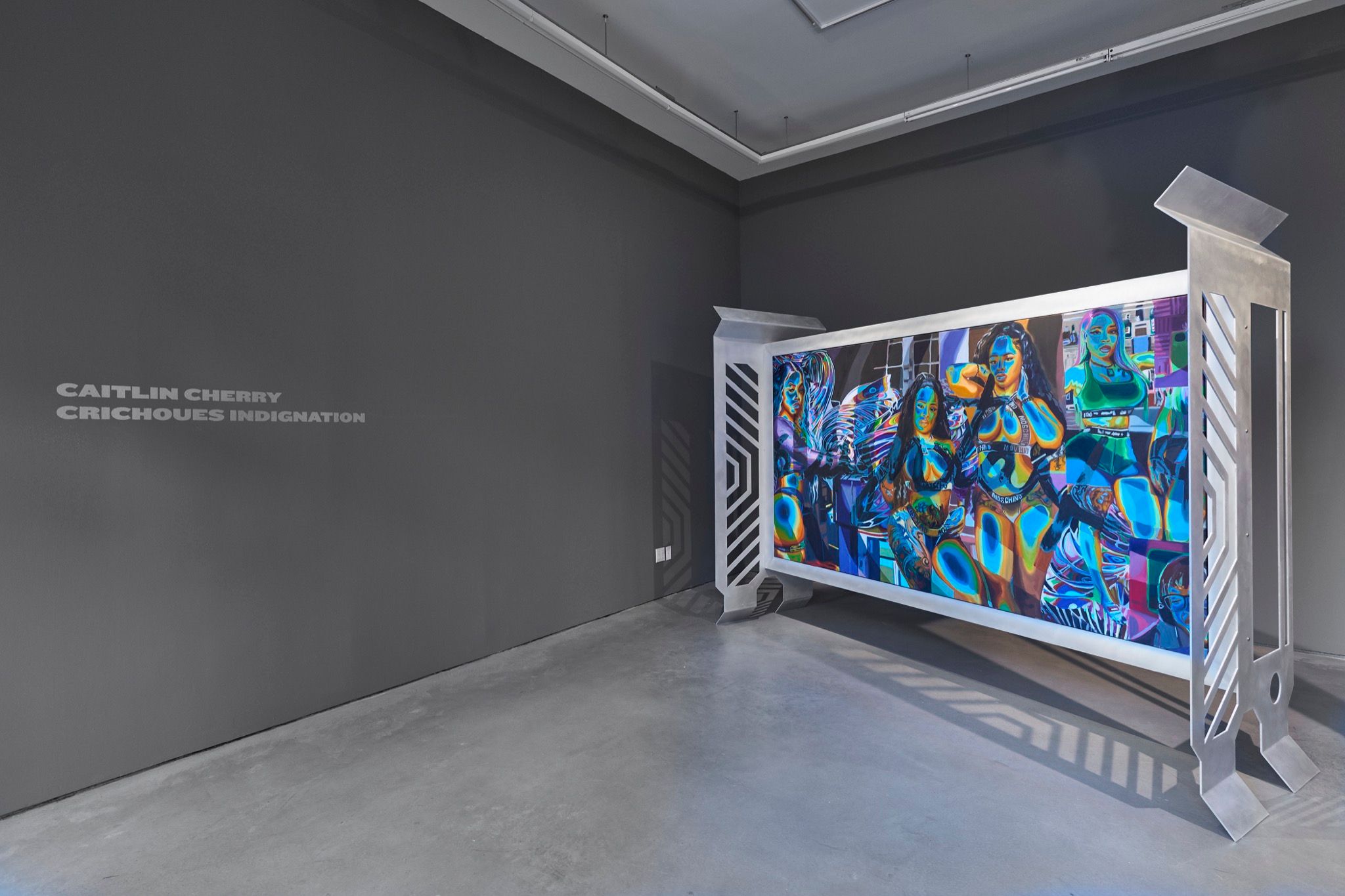
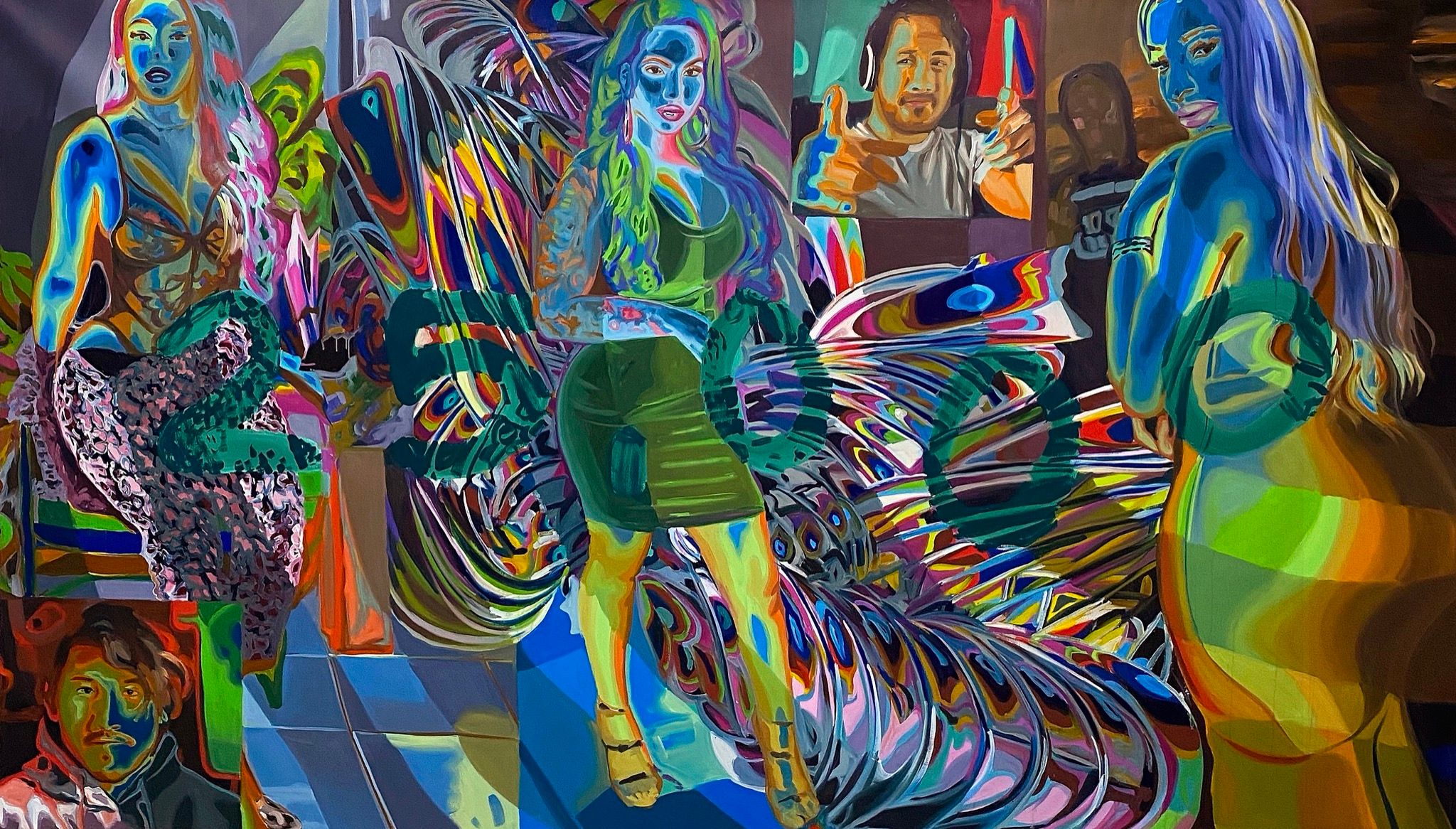
You almost pass over the presence of these men, but it’s clear they’re there.
The men in the images are all pulled from Let’s Play videos on YouTube. I wanted to find male reactors because traditionally Black femininity – or anything in this world – at some point has to be confronted with what white men think about it. I wanted to have a stand-in critic to represent this contemporary ideal of criticism. So, the way the men are positioned in each painting is like picture in picture. I collage the images of the women as if they’re all looking out at the viewer, and they are very rarely interacting with each other. To add this context of the gamers felt really relevant to me because there’s a bit of a clash of how it’s viewed. To me, these reactors need to be there to play out Black femininity similarly to what we experience offline in this world. I think that’s the metaphor I’m going for – they’re actually causing an interruption as you imagine them reacting to the painting.
Can you speak a bit to the influence of gaming culture on the work?
I used to play video games a lot when I was younger, so when I started watching them, it was just so nostalgic. My attraction to Let’s Play probably came from watching my older brother play video games a lot. For some reason, watching him play was almost more enticing to me than playing myself.
Which games are your favorite to watch?
I really liked watching playthroughs of Detroit Become Human. It’s a game of making choices. It’s almost like I, Robot as a game. It’s a futuristic world with robot companions who have to hide their sentience from humans, to avoid being decommissioned. It feels like I’m in the next camp of thinking where I don’t even want to watch a seven-hour Netflix series, I want to watch a 40-hour playthrough of a narrative game, where it’s actually fully interactive, but I don’t want to be the person to do the playing. I want to watch it happen through somebody that I’ve vetted as a good personality.
There were some pretty futuristic installations within the exhibition. Were they inspired by worlds you had encountered in video games?
The installation was inspired by computer graphic cards, the gaming world, and the world of technology. The main sculpture has designs pulled from high powered gaming graphic cards which have a particular aesthetics to them. I was almost trying to build something that resembled a computer and had storage, but was also functionally a security system. People really geek out about what their computer towers look like. That’s the design of the installation.
In my work of the last few years, I’ve been thinking about paintings as screens – as the laptop or containers of information. They’re actually holding what is contained within a graphic card. In the show, they were stacked side by side, and the viewer could walk up to and pull out each painting in the rack. They were all prints from my LA viewing room that had never been seen in person. There was, however, one real painting in the rack secured by a coded keypad.
When you have a bunch of graphic cards stacked together like that, it’s called it a render farm. I felt like that was the thread between my LA show and this one, and I call it the render farm because they’re not fully developed paintings – they’re loading. You’re not accurately viewing the painting in its typical context, and when you take the effort to pull out a painting, you realize they’re not paintings and that one even has coded access.
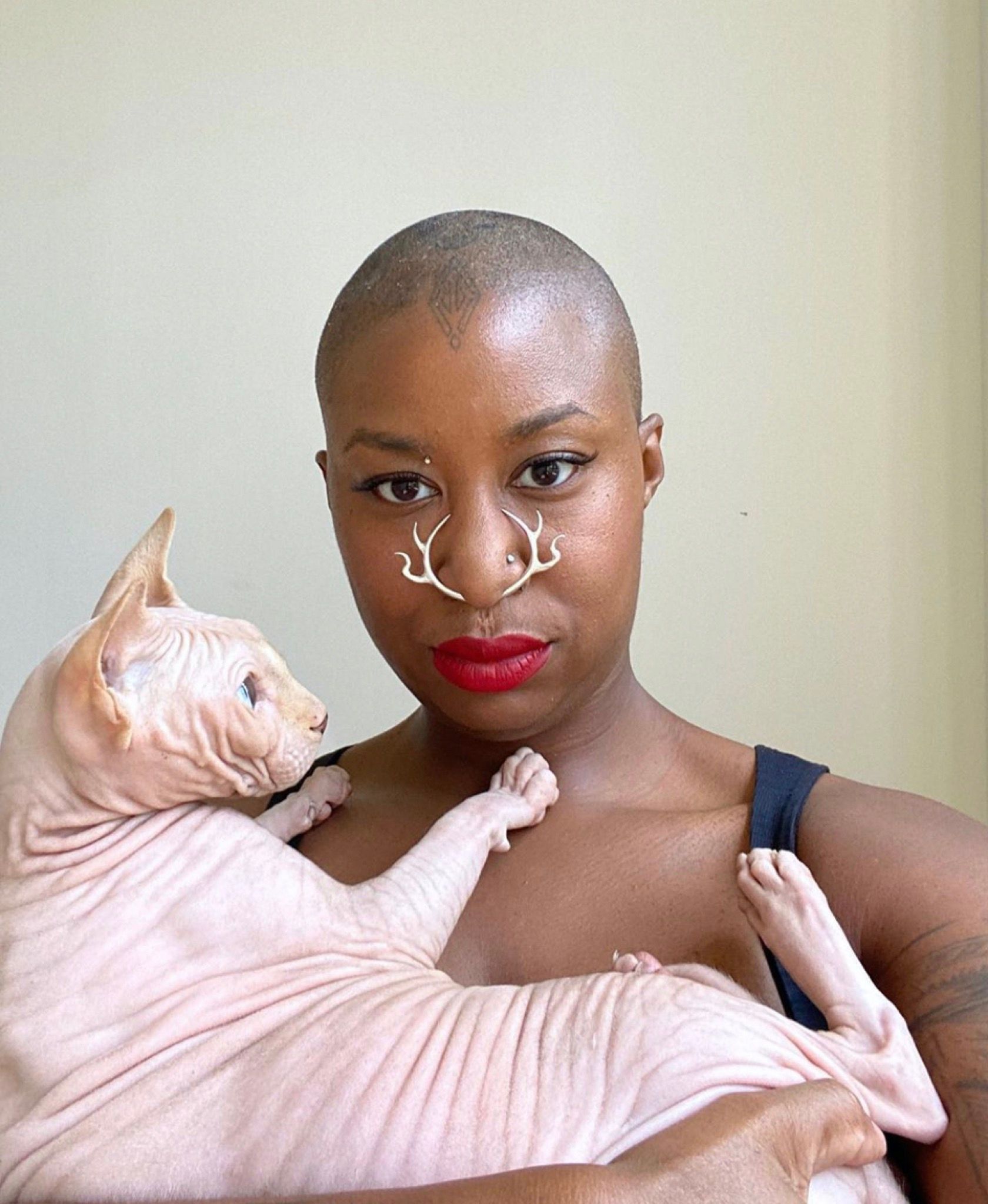
You brought codes and syntax into this body of work, which caused me to reflect on “code switching.” But there’s also an added element of security and access that you brought up earlier, in terms of how Black women move throughout spaces. In limiting how the viewer accesses the work, are you challenging how these images are legitimized and appropriated?
I think it’s somewhat relevant. I was thinking about syntax as part of a coding system technologically, but also in the world we’re in. Code switching is something I personally identify with significantly, because I’m somebody who moves between a lot of different worlds. I teach, so technically, I’m an academic, but also I have other interests. I feel like the confusion I was referring to earlier is part of the code switch. These women have to conform to the industry, but it’s done in ways that almost makes them unable to code switch back into any other world.
It’s definitely a cultural experience that I’ve had to be confronted with, as somebody who looks like these women. A lot of people find it hard to believe that I’m a professor because of how I like to dress or the way I look. I feel like I always have to change my appearance. That’s something that happens, unfortunately, with a lot of Black women moving through these institutions. I’m really seriously trying to unpack what the unworthy image is, because I think there’s no way that we can actually have any sort of liberation, until we confront the respectability of a certain type of Black woman’s image.
You’re also confronting these dialogues through Dark Study, a program of experimental education that you founded, which works to move away from traditional models of critical arts discourse in institutions. Can you speak to that?
Dark Study is an experimental art school really aiming to help Black, first generation, indigenous, people of color, queer and trans students who have experienced a tale as old as time. We built what would be an MFA-style program as an alternative – really trying to be flexible and experimental, while giving students options.
I teach full time, in addition to running Dark Study, and [I’ve observed that] it’s the way universities and art schools are built, which causes these students to be cast aside. Dark Study is a free virtual school, and it’s not demanding that anybody pick up and move. It’s meant to pick up folks who would’ve never made it into these types of programs because they’re built and geared towards middle to upper class students.
It’s a somewhat politically-minded program, so classes are unpacking the economics around art and thinking about the way art and artists move through the world. The reason why we have to do it within Dark Study and not our universities is because sometimes these ideas aren’t really promoted within our home schools. They don’t want us to get too political or too progressive. That’s why Dark Study is not an institution.
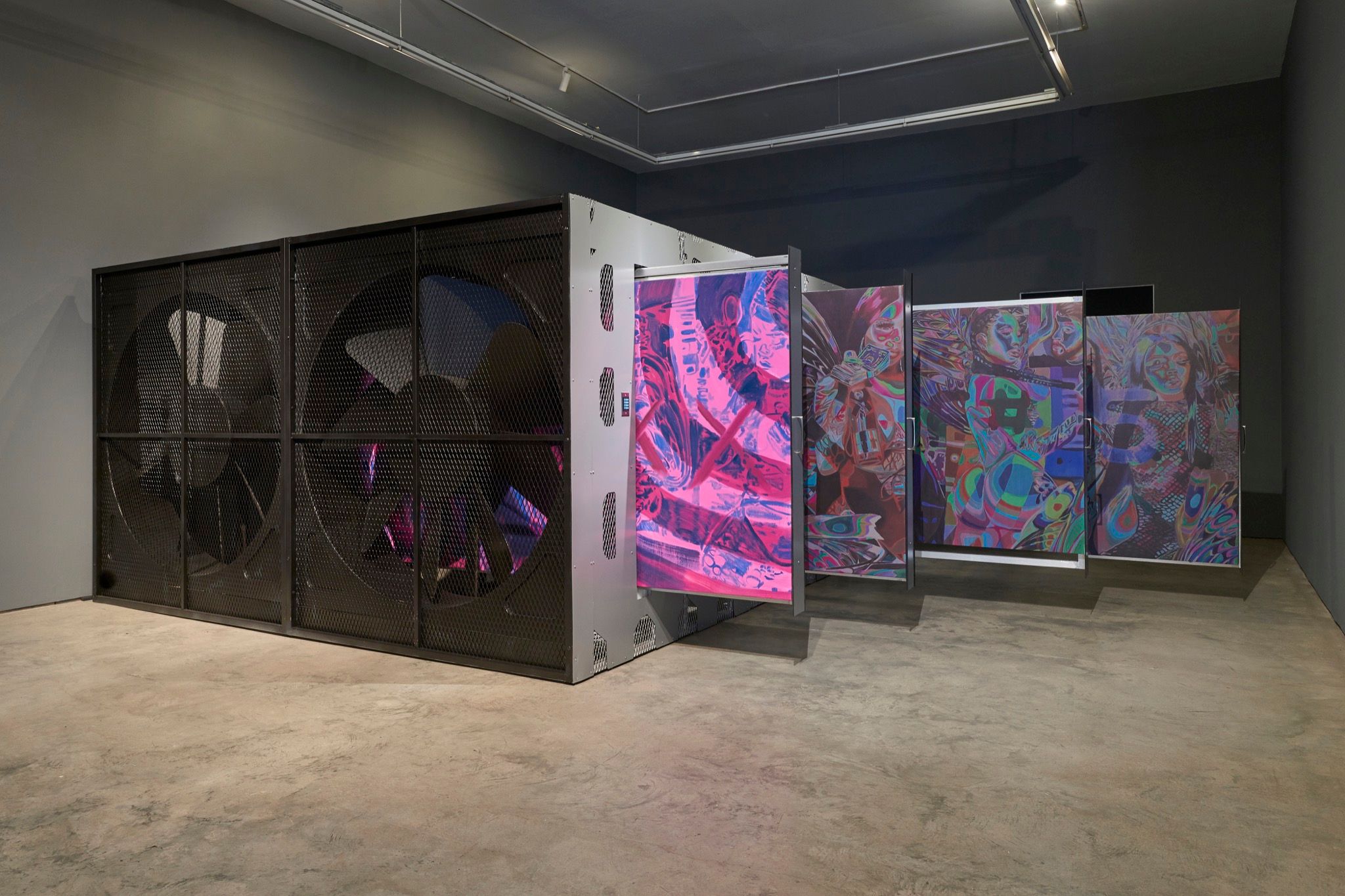
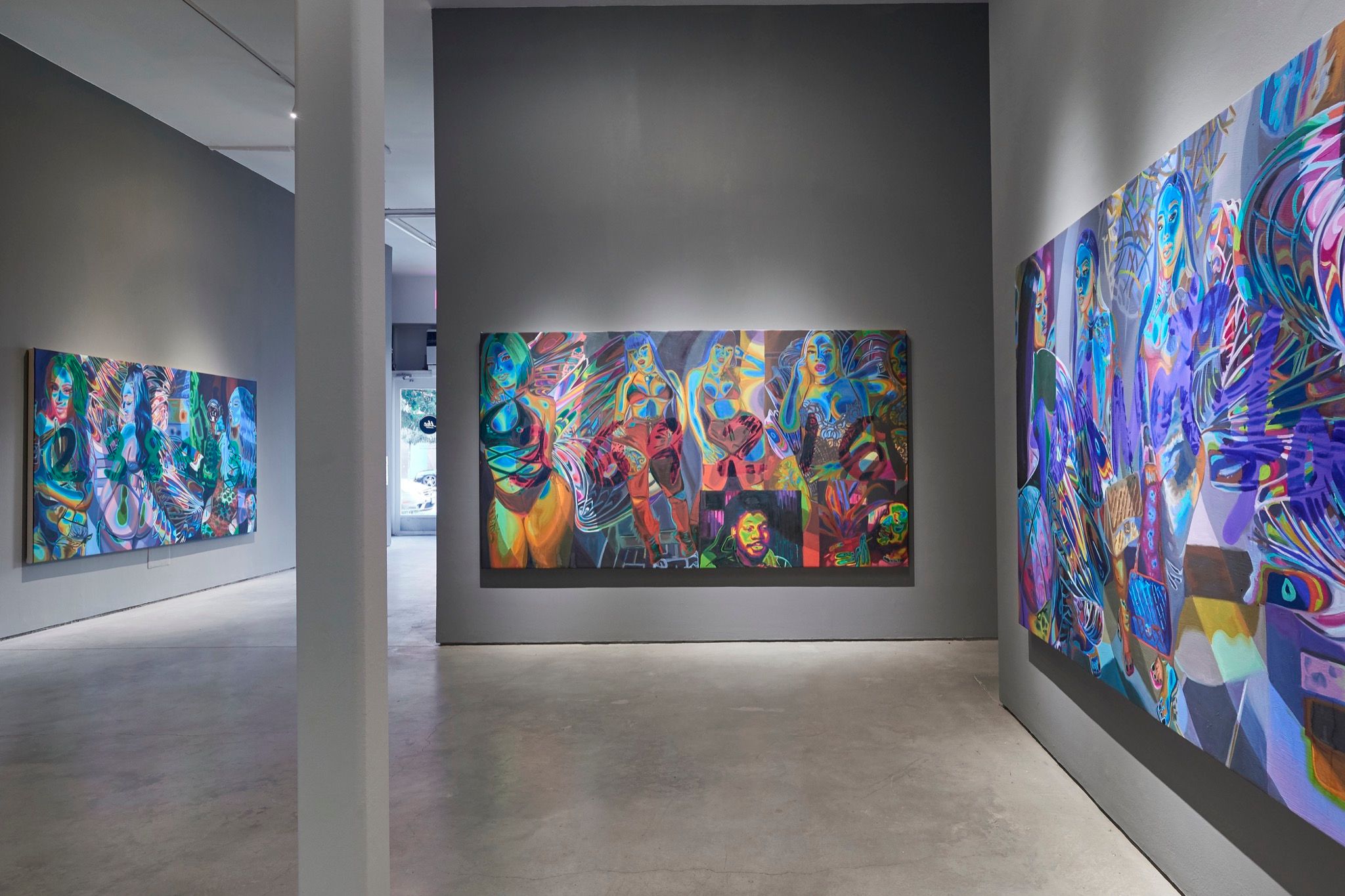
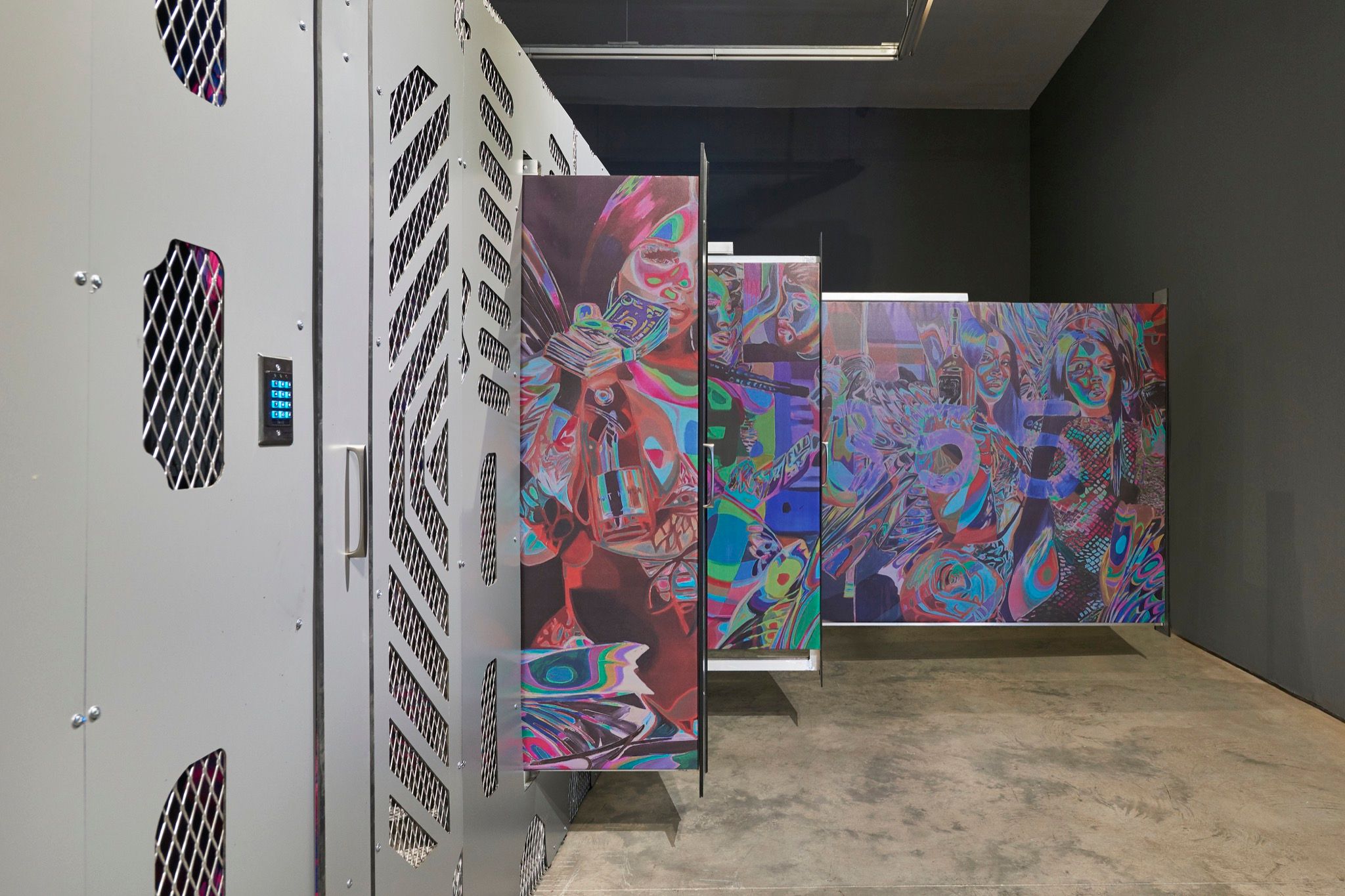
Credits
- Text: Tash Nikol Smith
